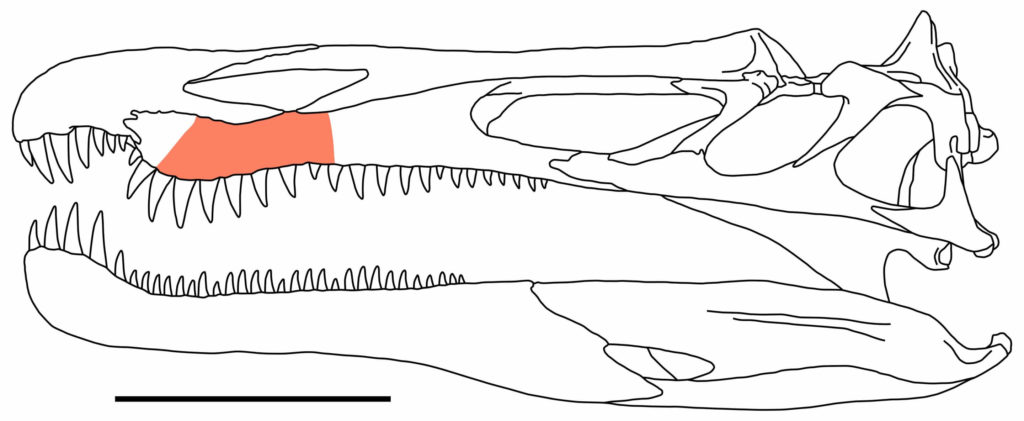Spinosaur dinosaurs may have developed up to three generations of teeth simultaneously. It is high speed
Scientists have re-evaluated the fossilsremains of jaws found in the La Rioja region of Spain in 1983. The remains are dated to the Lower Cretaceous period. In particular, paleontologists found a fragment of the left jaw of a predatory dinosaur, in which eight alveoli were preserved. Using microCT techniques, they discovered the remains of several teeth developing simultaneously in one of these dental sockets.
 Reconstruction of the skull of a spinosaurid dinosaur. The part of the jaw that paleontologists have studied is highlighted in red. Source: Erik Isasmendi, UPV/EHU
Reconstruction of the skull of a spinosaurid dinosaur. The part of the jaw that paleontologists have studied is highlighted in red. Source: Erik Isasmendi, UPV/EHU
“We recognized up to three generations of teethin the same alveolus: a functional tooth of the animal, another developing tooth that will replace the first, and the rudiment of one that will ultimately replace the second, the scientists explain in the article. “This suggests a very rapid turnover of teeth and is probably one of the reasons why so many spinosaur teeth can be found in the Iberian Peninsula during the Lower Cretaceous.”
Today it is known that someSpinosaurid species—medium to large carnivorous dinosaurs with elongated skulls—replace their teeth faster than other theropods: in just two months.
Although it is not known exactly why the teeth of Spinosauruschanged so often, it is believed that this helped them survive. A large number of functional teeth was a decisive advantage in holding prey between the jaws.
Read more:
Einstein's prediction may come true: how an experiment with invisible atoms will change physics
On the pyramid in China found a portrait of the "king of ancestors". He ruled over 4,000 years ago
“This is science fiction”: scientists create a fundamentally new type of quantum computers